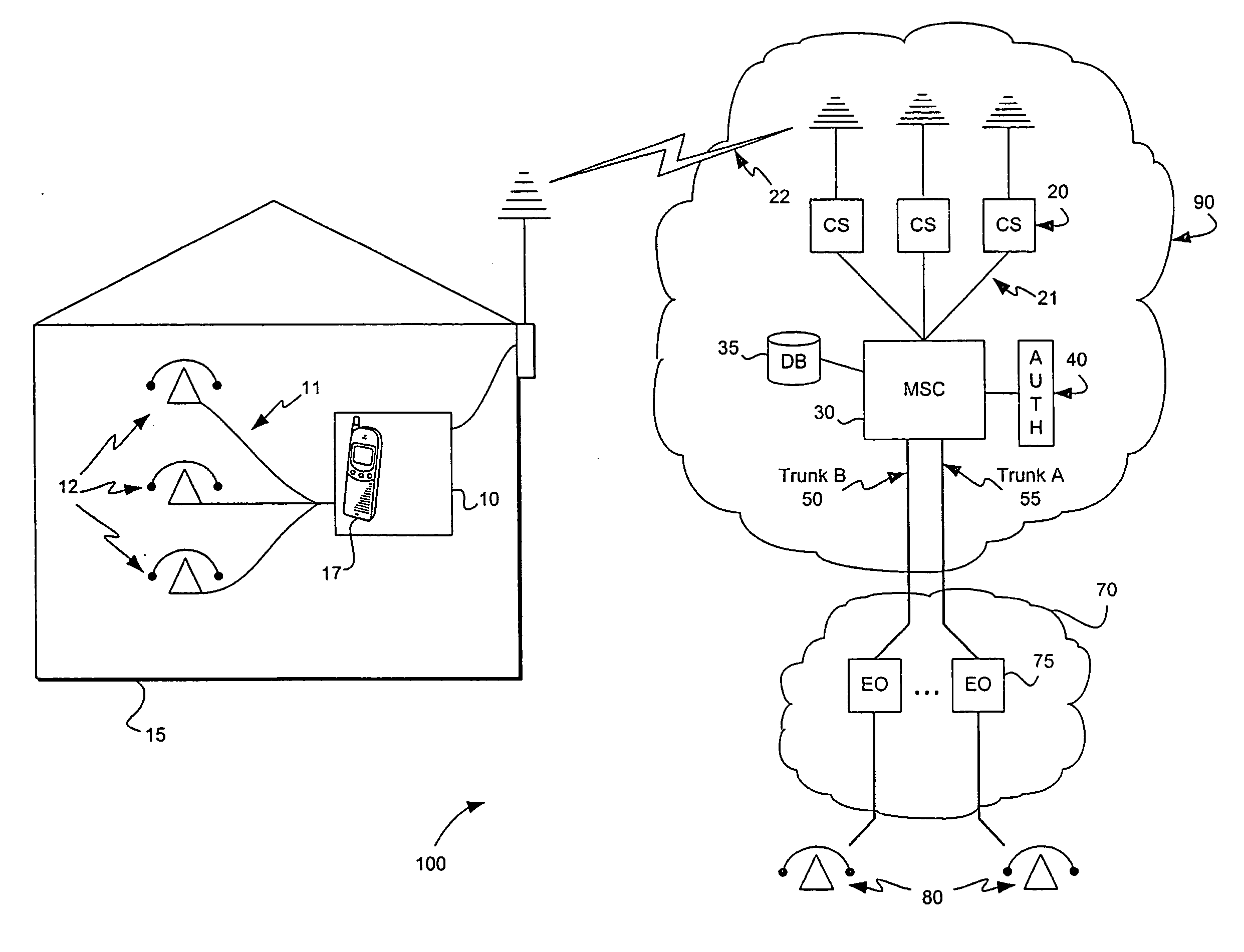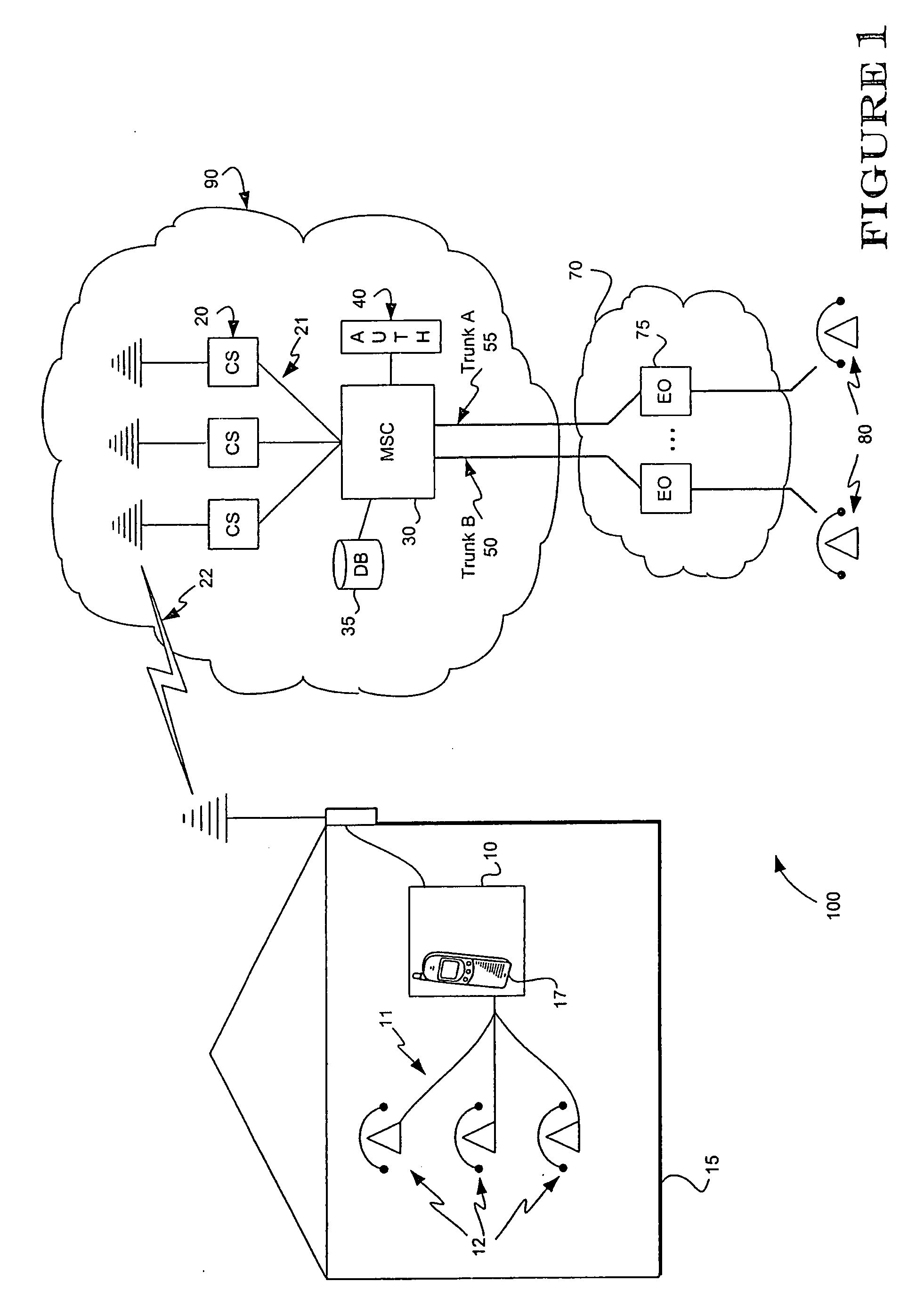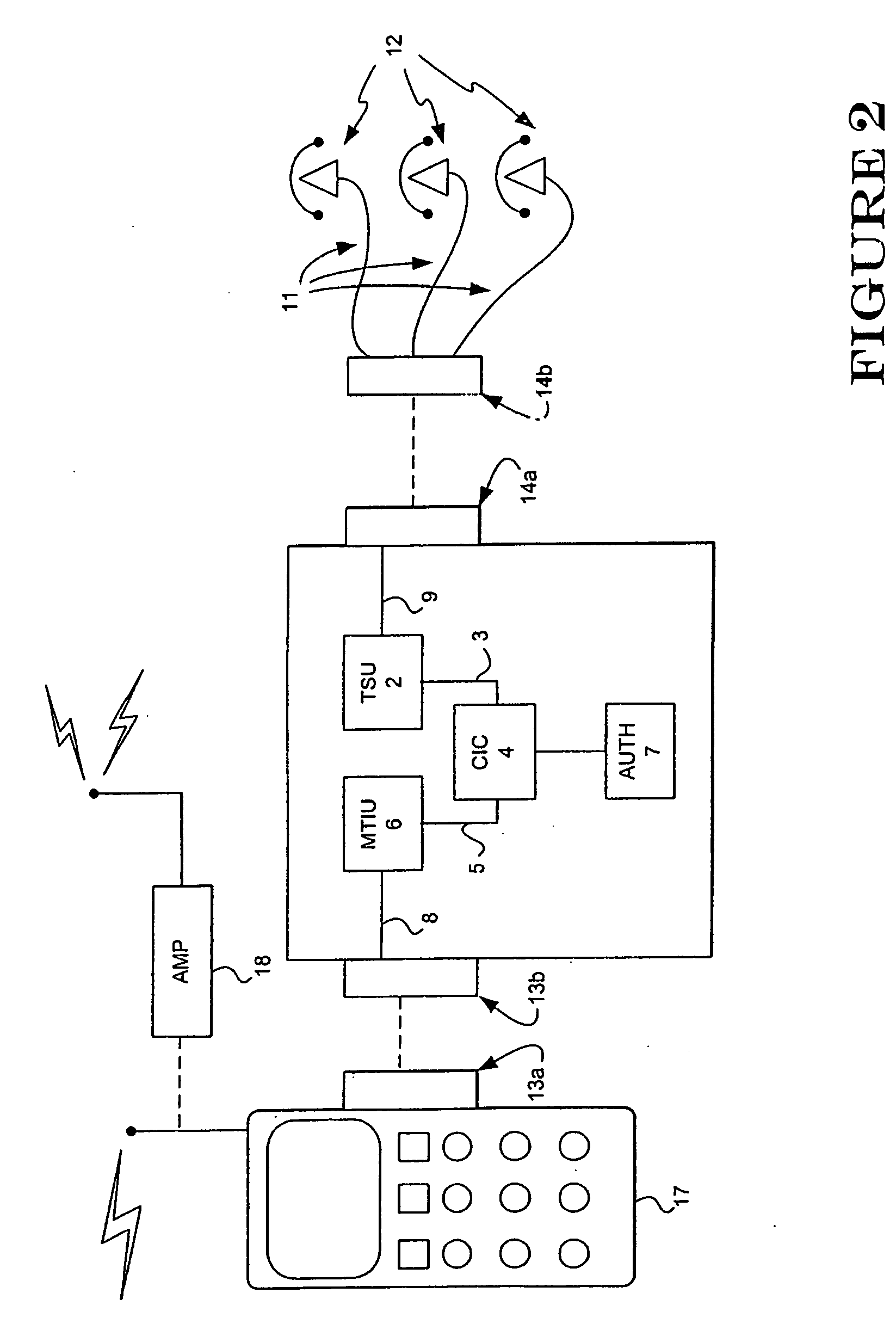Cellular docking station
a docking station and cellular technology, applied in the field oftelephonic communications, can solve the problems of limited allocation of frequency spectrum, poor quality of communication, and inability to accept two-way radios for general purpose communications, and achieve the effect of convenient and inexpensive delivery of communications through a pstn
- Summary
- Abstract
- Description
- Claims
- Application Information
AI Technical Summary
Benefits of technology
Problems solved by technology
Method used
Image
Examples
Embodiment Construction
[0030] Referring now to the drawings, in which like numerals indicate like elements throughout the several figures, FIG. 1 is a block diagram illustrating the preferred environment of the present invention, which includes a method and an apparatus for telephonic communication in regions not communicatively accessible via a public switched telephone network (PSTN) alone. Stated generally, one embodiment of the present invention receives an outgoing communication from a conventional telephone handset, appends the communication with a unique identifier and transmits the outgoing communication via a cellular mobile radiotelephone (CMR) system to the PSTN for delivery to a called party by way of a specially designated telephone cable trunk.
[0031] Referring to FIG. 1, the communication system 100 operates in conjunction with the CMR system 90 so as to take advantage of an existing wide area communications network and to avoid the expense of communicating with each individual cellular use...
PUM
 Login to View More
Login to View More Abstract
Description
Claims
Application Information
 Login to View More
Login to View More - R&D
- Intellectual Property
- Life Sciences
- Materials
- Tech Scout
- Unparalleled Data Quality
- Higher Quality Content
- 60% Fewer Hallucinations
Browse by: Latest US Patents, China's latest patents, Technical Efficacy Thesaurus, Application Domain, Technology Topic, Popular Technical Reports.
© 2025 PatSnap. All rights reserved.Legal|Privacy policy|Modern Slavery Act Transparency Statement|Sitemap|About US| Contact US: help@patsnap.com



